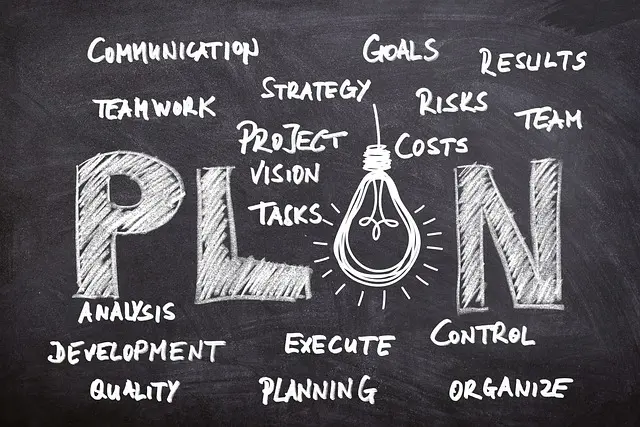
Crafting the Perfect Scholarship Essay: Tips and Examples
Winning a scholarship can be a life-changing opportunity that helps bridge the financial gap to achieve educational goals. However, acquiring a scholarship often requires submitting an exceptional essay. A scholarship essay is a personal statement that gives the selection committee insight into the applicant’s qualifications, aspirations, and character. Crafting the perfect scholarship essay involves careful planning, creativity, and attention to detail.
Understanding the Prompt
A common mistake students make when writing scholarship essays is failing to adequately address the prompt. The prompt may ask specific questions or suggest particular themes. It is crucial to thoroughly read and understand the prompt before starting the essay. Breaking down the prompt helps to identify the key elements that should be included in the essay.
Brainstorming Ideas
Before penning down the first draft, brainstorming is essential. Begin by reflecting on personal experiences, achievements, goals, and challenges. Think about what makes your story unique. Envision how these elements align with the scholarship’s objectives and values. Jotting down ideas helps in organizing thoughts and creating an outline.
Creating an Outline
A well-structured outline serves as a roadmap for the essay. Typically, scholarship essays include an introduction, body, and conclusion. The introduction should capture the reader’s attention and present the main idea. The body narrates the story or argument in detailed paragraphs, while the conclusion ties everything together and reinforces the main message.
It is advisable to divide the essay into clear sections to enhance readability. Each paragraph should focus on a single idea or theme. This makes it easier for the reader to follow the narrative and comprehend the essay’s message.
Crafting the Introduction
The introduction is the essay’s first impression. Starting with an engaging hook, such as an anecdote, a quote, or a startling statistic, can pique the reader’s interest. Following the hook, provide some background information that leads up to the main point or thesis statement of the essay. The thesis statement should succinctly express the central theme of the essay.
Example:
“Although I come from a small town with limited resources, my passion for environmental conservation has driven me to seek knowledge and initiate community projects that mitigate pollution.”
Body: Telling Your Story
The body of the essay is where you expand on your story. Each paragraph should transition smoothly from one idea to the next. Make sure to connect personal experiences to the broader themes suggested by the prompt. Use specific examples and anecdotes to make your narrative compelling and relatable.
For instance:
"One of the most transformative experiences has been organizing a local recycling initiative. With minimal funding and a dedicated team of volunteers, we managed to reduce waste by 30% in six months. This project taught me invaluable lessons in leadership, perseverance, and community engagement."
Highlight achievements but also don’t shy away from discussing challenges and how they were overcome. This demonstrates resilience and personal growth. Always link experiences back to the core message of the essay to maintain coherence.
Conclusion: Tying it All Together
The conclusion should bring closure to the essay while reinforcing the main points. Restate the thesis in light of the examples discussed in the body. Reflect on the significance of the experiences and the lessons learned. End with a strong statement that leaves a lasting impression on the reader.
Example:
"Through these experiences, I have not only developed a deep understanding of environmental conservation but also a commitment to leading initiatives that can create tangible positive changes in my community. This scholarship will provide the necessary support to further my education and amplify my impact."
Editing and Proofreading
An essay, no matter how insightful and compelling, will fall short if riddled with grammatical errors or inconsistencies. After writing the first draft, take a break before revisiting it for editing. This helps in approaching the essay with a fresh perspective.
Proofreading should involve checking for grammar, punctuation, and spelling mistakes. Additionally, seek feedback from teachers, mentors, or peers. They can provide valuable insights and point out areas that may need improvement.
Using Simple Language
It’s important to use simple and clear language. Overly complex sentences or difficult words can make the essay hard to read and understand. The goal is to communicate ideas effectively. Clarity and simplicity enhance readability and ensure the essay resonates with the reader.
Examples of Successful Scholarship Essays
Below are examples highlighting different approaches:
Example 1: A Personal Growth Story
"As a first-generation college student, I faced numerous challenges. My parents, who immigrated from Mexico, believed in the power of education but lacked the resources to guide me through the process. I took on multiple part-time jobs to support my family while maintaining a high GPA. These experiences taught me discipline, work ethic, and the importance of giving back to the community. I’m applying for this scholarship to pursue a degree in social work, with the goal of assisting underprivileged families navigate educational barriers."
Example 2: Demonstrating Passion
"Ever since I witnessed the negative impacts of climate change on our local wildlife, I have been driven to pursue environmental science. In high school, I founded an eco-club that partnered with local authorities to protect endangered habitats. I also conducted independent research on sustainable farming practices, which was later published in a youth scientific journal. This scholarship will enable me to delve deeper into solutions that can counteract environmental degradation and spread awareness on a larger scale."
Example 3: Overcoming Adversity
"Growing up in a single-parent household with financial constraints, I learned the value of perseverance. When my mother was diagnosed with a chronic illness, I became her primary caregiver. Balancing school, a part-time job, and caregiving duties was challenging, but it instilled a sense of responsibility and resilience in me. I am determined to become a nurse to provide compassionate care to those in need, just as I did for my mother. This scholarship is crucial in helping me achieve this dream and serve my community."
Crafting a Unique Voice
While it’s essential to follow a structured format, it’s equally important to let your personality shine through. The essay should reflect your unique voice and perspective. Authenticity resonates with readers and helps in forging a connection. Avoid clichés and generic statements. Instead, focus on providing genuine insights and reflections.
Adapting to Different Scholarships
Different scholarships may have varying criteria and values. A one-size-fits-all approach does not work. Tailor each essay to the specific scholarship you are applying for. Research the organization offering the scholarship and align your essay with its mission and values.
Final Thoughts
Crafting the Perfect Scholarship Essay requires diligence, introspection, and a clear understanding of the prompt. By effectively brainstorming, creating a structured outline, writing an engaging introduction, developing a coherent body, and concluding with impact, applicants can present a compelling narrative. Editing and proofreading ensure the essay is polished and error-free.
Moreover, expressing one’s authentic self and adapting the essay to the specific scholarship enhances its chances of success. Scholarships can be highly competitive, but with a well-crafted essay, you can stand out and make a convincing case for why you deserve the opportunity.












